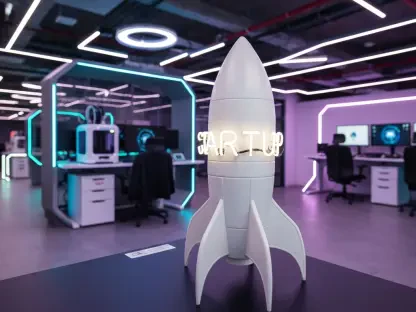In today’s fast-paced tech landscape, many SaaS leaders find themselves at a crossroads when it comes to adopting Generative AI (GenAI), often deterred by the widespread misconception that integrating such advanced technology demands a complete system rebuild from the ground up. Contrary to this belief, embedding GenAI into existing platforms doesn’t require tearing apart established architectures. The real hurdles are not rooted in technical redesign but in operational challenges that teams face daily. Issues like navigating complex legacy code, managing overstretched engineering resources, and addressing leadership concerns over prolonged architectural debates often stall progress. Add to this the fears of AI-related risks—such as data exposure or unpredictable outputs—and the uncertainty around costs or performance impacts, and it’s clear why hesitation persists. Yet, a smarter approach exists: creating a thin, controlled layer around current systems. This method abstracts complexity, isolates risks, and accelerates feature delivery without disrupting the core product or derailing critical roadmaps, offering a practical path forward for SaaS companies.
1. Unpacking Operational Challenges Blocking GenAI Adoption
Navigating the integration of GenAI into SaaS platforms often reveals a web of operational obstacles that overshadow technical concerns. A primary issue is the complexity of legacy systems, where tangled codebases and patched features make any new addition feel like a gamble on product stability. Teams are understandably cautious, as even minor changes can trigger unforeseen issues in environments already held together by delicate fixes. Beyond this, the fear of altering core logic looms large, with many hesitant to touch foundational systems that have been stable for years. This reluctance is compounded by internal political dynamics, where prolonged debates over architecture and dependencies can paralyze decision-making. Such discussions often delay momentum, leaving teams stuck in planning cycles rather than executing actionable steps toward AI integration.
Another critical barrier lies in resource constraints and roadmap pressures. Engineering teams, already stretched thin by existing commitments, view GenAI as a multi-sprint distraction that could divert focus from priority deliverables. Leadership, too, grapples with the risk of derailing quarterly goals for experiments that might not even reach production. Additionally, uncertainties around costs, latency, and performance overhead fuel decision paralysis, while concerns over AI safety—such as hallucinations or compliance risks—make GenAI seem unsuitable for enterprise-grade solutions. These operational and organizational blockers, rather than architectural limitations, are the true impediments to progress. Addressing them requires a shift in mindset, focusing on strategic, low-risk integration methods that preserve existing systems while still unlocking the potential of AI-driven innovation.
2. Exploring Quick and Safe Methods for GenAI Integration
One of the most effective ways to integrate GenAI into a SaaS platform without disrupting core systems is through API-based enhancement. This approach involves layering GenAI capabilities via API calls, allowing teams to enhance existing logic without rewriting backend structures. By sending structured prompts and receiving predictable outputs, the impact on the system remains minimal, ensuring rollouts are controlled and engineering efforts are kept light. This “bolt-on intelligence” model enables rapid deployment, delivering value to users without the need for deep architectural changes. It’s an ideal starting point for companies looking to test the waters of AI integration with low risk and high potential for quick wins.
Another promising strategy is deploying an independent AI sidecar service alongside the main application. This separate service manages GenAI tasks like prompt handling, retrieval, and validation, effectively isolating risks from the primary system. Should a failure occur, it’s contained within the sidecar, safeguarding the customer-facing product from disruption. Additionally, methods like adding a lightweight coordination layer between the UI and backend can orchestrate model calls and validate outputs without altering the existing architecture. Connecting an external vector store for context awareness or enriching outputs post-production further enhances functionality without touching core logic. Even front-end integrations, such as AI-driven text assistance or copilots in the UI, offer immediate value with almost no architectural footprint, proving that impactful changes can be achieved efficiently.
3. Following a Step-by-Step Guide to Chaos-Free GenAI Rollout
Implementing GenAI without inviting chaos starts with selecting low-risk features that won’t jeopardize product integrity or customer trust if the AI underperforms. Deploying behind feature flags is a prudent next step, as it limits exposure and allows for instant toggles without engineering stress. Running silent A/B tests to assess usefulness, accuracy, and adoption before a full rollout ensures confidence in the feature’s value. Metrics should focus on real impact—such as retention lift, task completion speed, and user satisfaction—rather than superficial stats. Establishing safeguards early, including boundaries for prompts, inputs, outputs, and fallback options, prevents rollout disasters and maintains system stability during the initial phases of integration.
Further steps include preparing support teams in advance with the necessary context to address user queries about AI behavior, ensuring smooth customer interactions. Launching to power users first leverages their ability to provide rapid, honest feedback and helps resolve issues before a wider release. Expanding gradually in controlled phases—by segment, region, or tier—avoids unexpected failures that could arise from an all-at-once rollout. Finally, treating GenAI as a continuous capability rather than a one-off feature encourages ongoing refinement of prompts, retrieval methods, costs, and models. This iterative approach ensures that the integration evolves with user needs and technological advancements, embedding AI as a sustainable asset within the SaaS ecosystem rather than a temporary experiment.
4. Identifying GenAI Features for Immediate Implementation
SaaS platforms can quickly adopt several GenAI features without requiring extensive overhauls, starting with intent-driven semantic search. By leveraging a vector store, this feature delivers smarter, contextual search results without altering the existing database, enhancing user experience with minimal effort. Automated summaries for reports, logs, or conversations can also be added as a post-process layer, preserving backend workflows while providing concise, actionable insights. In-UI suggestions, such as auto-complete or guided inputs, further improve usability by embedding intelligence directly into the interface, requiring only light engineering support to implement and yielding immediate benefits for users navigating complex tasks.
Beyond search and summaries, embedding conversational support within the product offers significant value by deploying AI trained on documentation to guide users and reduce support tickets, all without structural changes. In-app content creation tools, enabled via lightweight API calls, allow users to draft or rewrite content seamlessly within existing workflows. Additionally, data-driven insight layers can transform raw data into explanations or recommendations without new pipelines, while task automation through AI copilots streamlines repetitive actions at the UI level, leaving core logic untouched. These features collectively demonstrate how GenAI can enhance a SaaS offering rapidly, focusing on user-facing improvements that drive adoption and satisfaction without risking system stability.
5. Understanding Cost, Speed, and Performance Dynamics of GenAI
Integrating GenAI into a SaaS platform doesn’t have to strain budgets or lead to uncontrolled spending. Costs remain manageable with a focused investment in model API usage, vector stores, and light orchestration layers, especially when limits are defined early in the process. This deliberate design ensures predictability, allowing teams to scale AI capabilities without financial surprises. Performance also stays robust when GenAI is added at the system’s edges rather than embedded within core services. Techniques like selective model calls, smart caching, and dedicated AI layers prevent overloading main services, maintaining low latency and ensuring reliability for end users, even as new features are introduced.
Speed of implementation is another advantage when overplanning is avoided. High-value GenAI features can often launch within four to eight weeks by adhering to a clear scope, focusing on small integration surfaces, and prioritizing rapid validation over extended planning cycles. This approach minimizes delays and maximizes early feedback, enabling teams to refine and expand based on real-world usage. By integrating deliberately, SaaS companies can enhance their offerings with intelligence that complements existing systems, avoiding disruptions to the engine that already delivers value. The emphasis on efficiency and strategic focus ensures that GenAI becomes a competitive advantage rather than a resource drain.
6. Recognizing the Importance of Strategic and Swift Action
Achieving success with GenAI integration hinges on moving with intention, striking a balance between reckless haste and bureaucratic delays. A disciplined approach prioritizes delivering real product intelligence without derailing existing momentum or compromising system stability. Many SaaS companies struggle at this juncture, caught between the desire for innovation and the fear of disruption. Overcoming this inertia requires a sharp focus on targeted integration that enhances specific areas of impact while preserving core architecture and adhering to planned roadmaps. This mindset shifts the narrative from risk to opportunity, enabling platforms to stay competitive in a rapidly evolving market.
Support from specialized partners can significantly streamline this process. Services that focus on embedding GenAI as a high-impact, lightweight layer ensure that SaaS products gain intelligence quickly and safely. The goal remains clear: to make platforms smarter and more valuable within weeks, not months, through scalable solutions that grow with the business. This strategic speed avoids the pitfalls of overengineering or endless experimentation, positioning companies to leverage AI as a differentiator. By focusing on practical engineering and clean abstractions, the path to a more intelligent SaaS offering becomes not just achievable, but also sustainable over the long term.
7. Reflecting on Smarter Paths to GenAI Readiness
Looking back, the journey to integrating GenAI into SaaS platforms revealed that lightweight, impactful layers provided a powerful solution to enhance products without the burden of rework or risk. These targeted integrations sidestepped the need for extensive system overhauls, allowing companies to maintain focus on their core offerings while still embracing cutting-edge technology. The emphasis on preserving existing architectures ensured that roadmaps remained intact, avoiding the disruptions that many feared would accompany AI adoption. This approach proved that innovation and stability could coexist, delivering intelligence to users without compromising the systems they relied upon.
As a final consideration, the path forward involved a commitment to deliberate action, where each step was guided by clear intent and measurable outcomes. Solutions that prioritized efficiency and scalability demonstrated how SaaS platforms could evolve into GenAI-ready ecosystems with minimal friction. By focusing on practical enhancements and avoiding unnecessary complexity, businesses unlocked new value for their users, setting a foundation for continuous improvement. This strategic mindset offered a blueprint for others to follow, ensuring that AI became a seamless part of the SaaS landscape rather than a source of upheaval.









